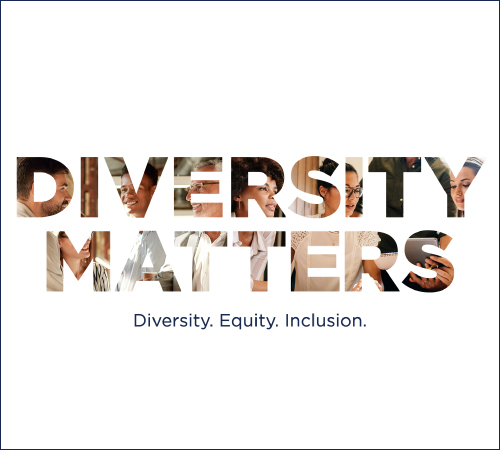Defining Diversity, Equity, and Inclusion
Diversity, equity, and inclusion are related but distinct terms, and the nuances matter. The first step toward fostering a healthier corporate culture is to understand these terms, the differences between them, and the actions required to ensure the proper promotion of each.
The following definitions of diversity, equity, and inclusion are sourced from the UC Berkeley Center for Equity, Inclusion, and Diversity and the University of Houston’s Center for Diversity and Inclusion, via Karen Armstrong.
Diversity
Includes but is not limited to race, color, ethnicity, nationality, religion, socioeconomic status, veteran status, education, marital status, language, age, gender, gender expression, gender identity, sexual orientation, mental or physical ability, genetic information, and learning styles.
Equity
The guarantee of fair treatment, access, opportunity, and advancement for all while striving to identify and eliminate barriers that have prevented the full participation of some groups. The principle of equity acknowledges that there are historically under-served and under-represented populations and that fairness regarding these unbalanced conditions is needed to assist equality in the provision of effective opportunities to all groups.
Inclusion
Authentically bringing traditionally excluded individuals and/or groups into processes, activities, and decision/policy making in a way that shares power and ensures equal access to opportunities and resources.


Fast Facts
According to research conducted by Accenture, over two-thirds of leaders (68 percent) feel they create empowering environments in which employees can be themselves, raise concerns, and innovate without fear of failure — but just over one third (36 percent) of employees agree.
Accenture estimates that if the employee perception gap were narrowed by 50%, global profits would be 33% higher, equivalent to $3.7 trillion in 2019.
Research from Emtrain reveals only 32% of employees strongly agree that they can be their authentic self in the workplace.
Research from McKinsey & Company shows that companies in the top-quartile for gender diversity on their executive teams were 21% more likely to have above-average profitability than companies in the fourth quartile. For ethnic/cultural diversity, top-quartile companies were 33% more likely to outperform on profitability. Gender-diverse companies are 15% more likely to outperform their peers and ethnically diverse companies are 35% more likely to do the same.
Additional Research and Statistics
- U.S. Chamber of Commerce: America’s Opportunity Gaps by the Numbers
- Emtrain: 2020 Culture Report
- McKinsey & Company: Delivering Through Diversity
- Accenture: Getting to Equal 2020
- Glassdoor: Guide to DEI in the Workplace
- What Your Front-Line Managers Need to Know About Hiring, Diversity, Inclusion, and EEOC Compliance
- HR.com: Workplace Diversity and Inclusion: Emerging Awareness and Best Practices (HR.com)
Articles and Blogs
- Via Harvard Business Review, Why Isn’t Your Organization Hiring Diverse Talent?
- Via CIO.com, Diversity and Inclusion: 7 Best Practices for Changing your Culture
- Via Harvard Business Review, 5 Strategies for Creating an Inclusive Workplace
- Via AI in HR Analytics, Inclusion and Employee Diversity: Here Are the Numbers
